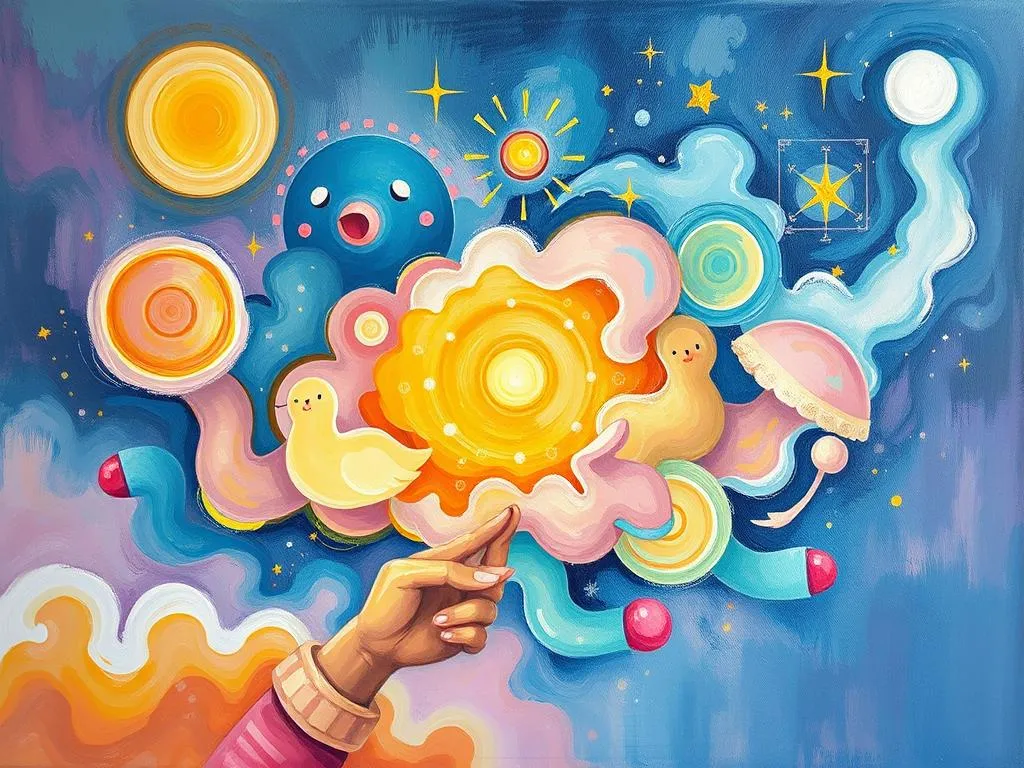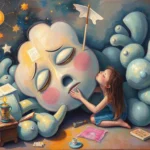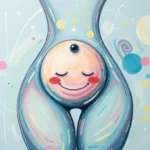
Have you ever woken up from a dream, your heart racing and your mind swirling with images that seemed to blur the lines between reality and imagination? Dreams have fascinated humans for centuries, serving as a window into our subconscious, a reflection of our deepest fears, desires, and unresolved conflicts. They speak to us in symbols, weaving narratives that can guide us toward personal insights.
In this journey through the realm of dreams, we’ll delve into the intricate tapestry of dream symbols, explore the many ways these symbols manifest in our experiences, and ultimately uncover how we can harness this knowledge for personal growth. So, buckle up as we embark on an adventure through the landscapes of our minds!
Dream Language: Decoding Symbols
Dreams are rich with symbols—visual cues and metaphors that arise from our subconscious. Each symbol carries unique meanings influenced by cultural backgrounds, personal experiences, and psychological interpretations. Understanding these symbols can provide profound insights into our waking lives.
The Power of Symbols
-
Animals: Animals often represent our instincts and primal urges. For example, a snake might symbolize transformation or hidden fears, while a lion can represent courage and strength. The context matters; a friendly pet may evoke feelings of comfort, while a menacing creature can signify anxiety.
-
Water: Water is a powerful symbol often associated with emotions and the unconscious. Calm waters may represent tranquility and peace, while turbulent waters could indicate emotional turmoil or unresolved issues. Think of how a flood can symbolize overwhelming feelings that you struggle to navigate.
-
Flying: The act of flying in dreams often represents a desire for freedom or escape from limitations. It can signify a breakthrough in your life or a longing for independence. However, if you are struggling to fly, it may indicate feelings of inadequacy or fear of failure.
-
House: A house in dreams often symbolizes the self. Different rooms can represent various aspects of your personality or life experiences. For instance, a messy room may indicate chaos in your life, while an empty room could signify feelings of loneliness or unfulfillment.
-
Falling: The sensation of falling often reflects feelings of loss of control or insecurity. It can reveal anxieties about life changes, relationships, or career paths. Conversely, a gentle fall might indicate a surrender to a situation, showing that you are letting go of stress.
As you reflect on your dreams, remember that the meanings of these symbols can vary widely from person to person. The key is to connect the symbols to your own experiences and emotions.
Dreams in Motion: Real-Life Scenarios
Every dream is a story waiting to be told, and often, our dreams mirror our waking realities. Let’s explore some common dream scenarios and their deeper meanings through the lens of personal experience.
1. The Endless Chase
Imagine this: You find yourself running through a foggy landscape, pursued by an unseen threat. Your heart pounds as you race against time, desperately trying to escape.
This scenario often reflects feelings of anxiety and pressure in your waking life. Perhaps you feel overwhelmed by responsibilities or are avoiding a difficult situation. The chase may symbolize your struggle to confront fears. It’s a reminder to face challenges head-on rather than running away.
2. The Unfamiliar House
You enter a house you’ve never seen before, wandering from room to room, discovering hidden passages and forgotten spaces.
This dream often signifies self-exploration. Each room may represent a different aspect of your personality or experiences. If you find a beautiful room, it may reflect a newfound confidence or a talent you’ve yet to recognize. Conversely, if you encounter dark, neglected spaces, it might indicate unresolved issues begging for your attention.
3. The Waterfall
You stand at the edge of a magnificent waterfall, mesmerized by its beauty, yet feeling the pull of the rushing water.
This dream can symbolize a turning point in your life. The waterfall may represent emotions that are pouring out, a release of pent-up feelings. If you dive into the water, it could signify a willingness to embrace change or confront your emotions. If you hesitate, it may indicate fear of the unknown.
4. Flying High
In your dream, you take to the skies, soaring above landscapes, feeling the wind beneath your wings.
Flying often symbolizes freedom and liberation. This dream may indicate a sense of empowerment in your waking life. You might have recently overcome obstacles or achieved a goal, and your subconscious is celebrating this newfound freedom. However, if you struggle to maintain altitude, it could reflect fears of failure or self-doubt.
5. The Sudden Fall
You find yourself tumbling down an endless pit, your stomach dropping as you plunge into the unknown.
This scenario often relates to feelings of insecurity or instability. Perhaps you’re facing changes in your life that leave you feeling vulnerable. It’s a call to acknowledge these feelings and seek support as you navigate through uncertainties.
These scenarios highlight the importance of personal context in dream interpretation. By paying attention to the emotions and details within your dreams, you can uncover valuable insights about your waking life.
Awakening Potential: Personal Growth Through Dreams
Now that we’ve explored the language of dreams and the stories they tell, let’s shift our focus to how you can harness this knowledge for personal growth. Dreams can serve as a guide, pointing out areas in your life that need attention or reflection.
Embrace Self-Reflection
Take time to journal about your dreams. Write down the symbols, emotions, and scenarios that stand out. Reflect on how these elements connect to your waking life. What unresolved issues or desires might they reveal? This practice can foster self-awareness and help you uncover patterns in your thoughts and behaviors.
Set Intentions Before Sleep
Before going to bed, set an intention for your dreams. You might ask for clarity about a specific situation or insight into a problem you’re facing. This practice can help your mind focus on what you truly need guidance on, enhancing the likelihood of receiving a meaningful message during your dreams.
Explore Dream Symbols Across Cultures
Different cultures have unique interpretations of dream symbols. For instance, in some Indigenous cultures, dreams are viewed as messages from ancestors or spiritual guides. Exploring various cultural perspectives can enrich your understanding of your dreams and offer new insights that resonate with your personal experiences.
Seek Professional Guidance
If your dreams evoke strong emotions or lead to recurring themes, consider seeking guidance from a therapist or a dream analyst. They can help you navigate through the complexities of your subconscious and provide strategies for addressing any underlying issues.
Integrate Insights Into Your Life
Finally, take the insights gained from your dreams and integrate them into your daily life. If a dream prompts you to address a fear, take actionable steps toward confronting that fear. If it reveals a hidden talent, find ways to explore and nurture that aspect of yourself.
Dreams are not just fleeting images; they are powerful tools for transformation and growth. By engaging with them thoughtfully, you can unlock the potential that lies within you.
As we conclude this exploration of dream symbolism, remember that your dreams are a unique and personal tapestry, woven from your experiences, emotions, and aspirations. They are invitations to delve deeper into your psyche, offering guidance and wisdom along your journey.
Embrace the messages that come to you in the night, for they may light the path to your true self.







